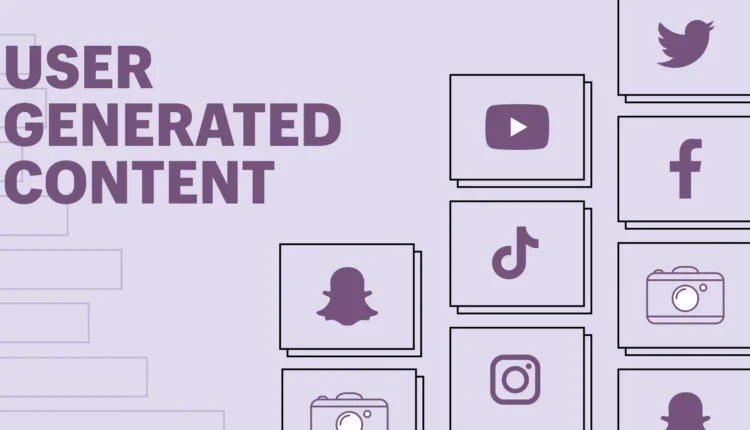In today’s world with much digital technology, advertising technology (often called AdTech) has greatly changed how businesses connect with their customers. One exciting improvement in this area is using content made by users themselves, also known as user-generated content (UGC). UGC means any content, like text, videos, images, reviews, and more that users instead of companies make. This article discusses how AdTech (advertising technology) uses UGC to make ads feel more real and work better.
The Rise of User-Generated Content
The internet has made it possible for everyone to speak out. Social media sites such as Instagram, Facebook, and Twitter let people share what they think, their life experiences, and creative ideas with many others globally. This rise in user-made content has changed the marketing world. Companies see that people believe what their friends and other users say more than regular ads. Because of this, UGC has turned into a useful resource for brands that want to gain trust and connect more closely with their audience.
Authenticity: The New Currency
In time now when people see ads everywhere, being real is different. Usual advertisements sometimes feel planned and not honest, making viewers tired of too many ads. On the other side, UGC gives a fresh choice. When normal people talk about their real experiences with some product or service, it connects more with possible customers. This realness can strongly affect buying choices since people usually believe advice from other customers more than those given by the brands directly.
How AdTech Utilizes UGC
AdTech created advanced tools and platforms to make good use of UGC. Here is how:
- Content Aggregation: AdTech platforms can gather user-generated content (UGC) from different places. This includes posts on social media, reviews, and blog articles. By gathering this content, brands can get a complete understanding of what their customers talk about and how they engage with their products.
- Content Curation and Moderation: Not all user-generated content (UGC) is the same. AdTech tools assist brands in selecting the best content, ensuring it matches their marketing goals and brand image. These tools can also help manage content to remove unsuitable or unrelated posts, keeping a good brand image.
- Personalization and Targeting: AdTech uses data analysis to make ads more personal with UGC. By looking at user data, these platforms can find out which UGC will connect best with different groups of people. This targeted approach increases the relevance and effectiveness of ads.
- Programmatic Advertising: Programmatic advertising makes the process of buying and placing ads automatic. AdTech platforms can put User-Generated Content (UGC) into these programmatic ads, making sure they reach the correct audience at the perfect moment. This not only makes ads work better but also gets users more interested by showing content they can relate to.
Benefits of Integrating UGC in Ad Campaigns
Incorporating UGC into ad campaigns offers several benefits:
- Improved Trust and Credibility: As said before, people trust reviews and experiences from others more than brand ads. Using UGC in advertisements can make a brand seem more trustworthy and reliable.
- More Engagement: User-generated content (UGC) is very engaging because it shows real-life experiences and stories. Ads that use UGC usually get more likes, shares, and comments since people find them relatable and interesting.
- Efficiency in Cost: Making new content can be very costly and take a lot of time. UGC offers a cheaper option, letting brands use the content their users already make.
- Various Content: User-generated content (UGC) shows up in many types and styles, providing a wide variety of material. This wide range can help brands connect with different groups of people by using content that attracts each unique audience specifically.
Challenges and Considerations with UGC
When UGC brings many benefits, there are also problems and things to remember:
- Quality Control: Ensuring the quality and relevance of User-Generated Content can be difficult. Brands must use strong moderation steps to keep up good standards.
- Legal and Ethical Issues: Using UGC needs to get permission and follow copyright rules. Brands should be careful to make sure they have the proper rights to use content made by users.
- Consistency: Using User-Generated Content (UGC) while keeping a steady brand voice and image can be hard. Brands need to find the right balance between being genuine and staying true to their brand’s style.
- Negative Feedback: Not all user-generated content (UGC) is nice. Brands have to be ready to deal with negative feedback and turn it into something useful for making their products and services better.
Conclusion

Content made by users is now a strong tool in the AdTech world. Its realness and how people can relate to it make it very valuable for brands wanting to connect with their audience deeply. By using User-Generated Content well in their ad campaigns, brands can build more trust, get people to engage more, and see better results in marketing. But it’s very important to handle the problems that come with User-Generated Content wisely so they can use its full power. As the digital world keeps changing, User-Generated Content will surely have a big importance in forming how advertising will be in the future.
FAQs
1. What is user-generated content (UGC)?
User-generated content refers to any content created by consumers rather than brands, including text, images, videos, and reviews.
2. Why is UGC important in AdTech?
It is important in AdTech because it offers authenticity and relatability, enhancing trust, engagement, and effectiveness in marketing campaigns.
3. How does AdTech utilize UGC?
AdTech utilizes User Generated Content by aggregating, curating, personalizing, as well as incorporating it into programmatic ads to reach targeted audiences effectively.
4. What are the challenges of using UGC in ad campaigns?
Challenges include quality control, legal and ethical issues, maintaining brand consistency, and managing negative feedback.


